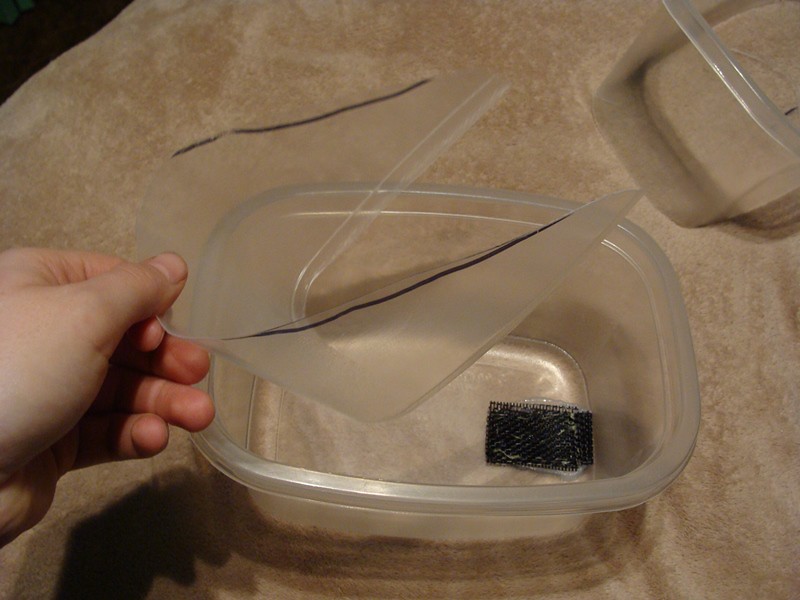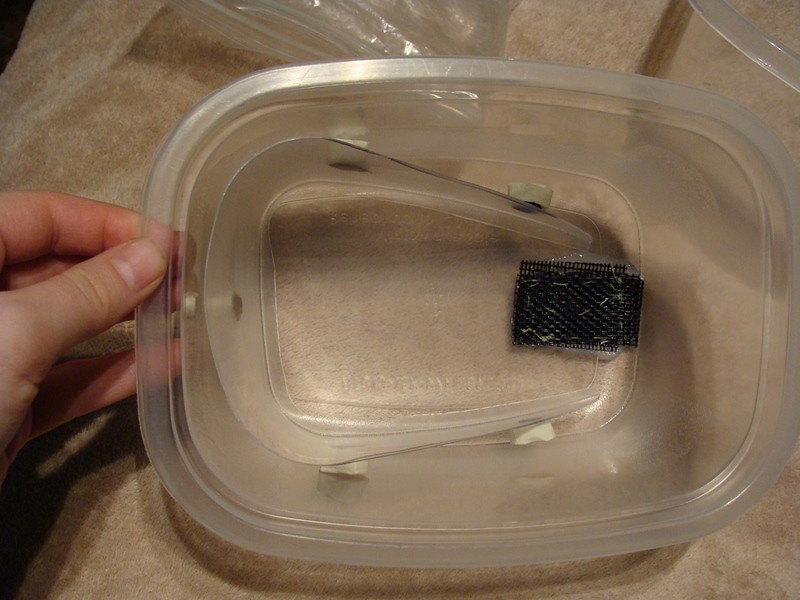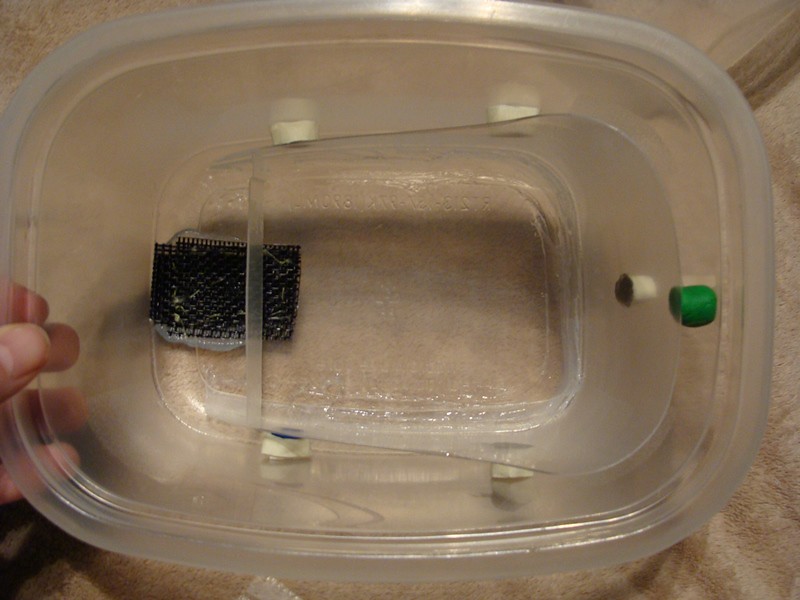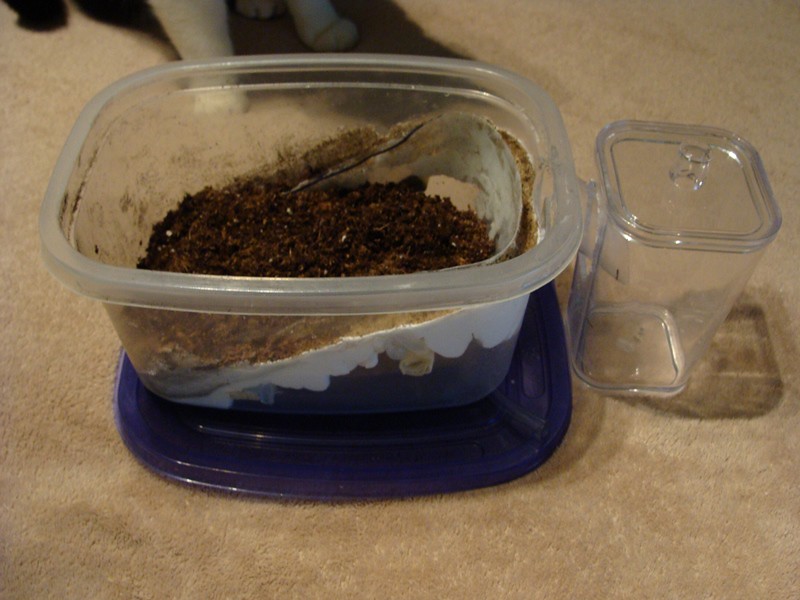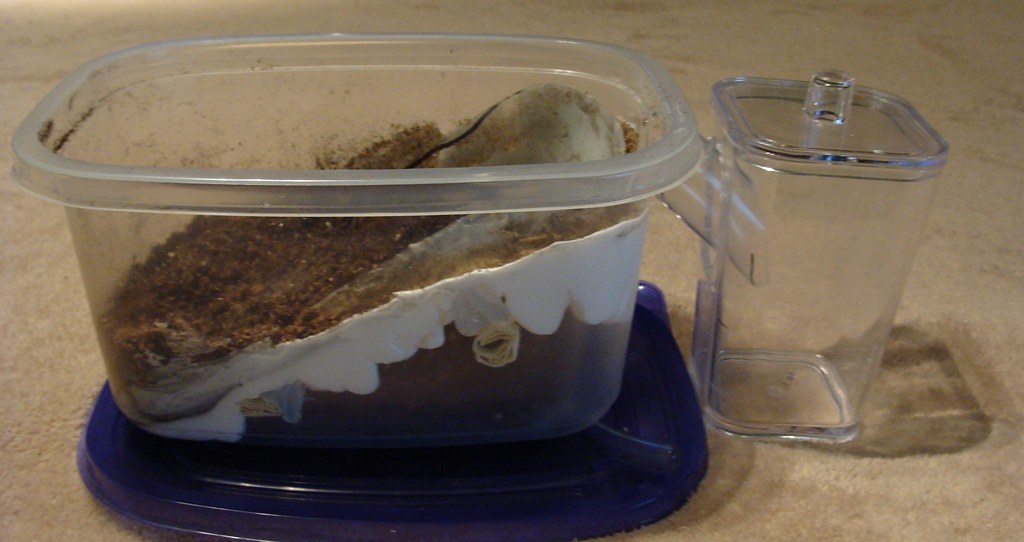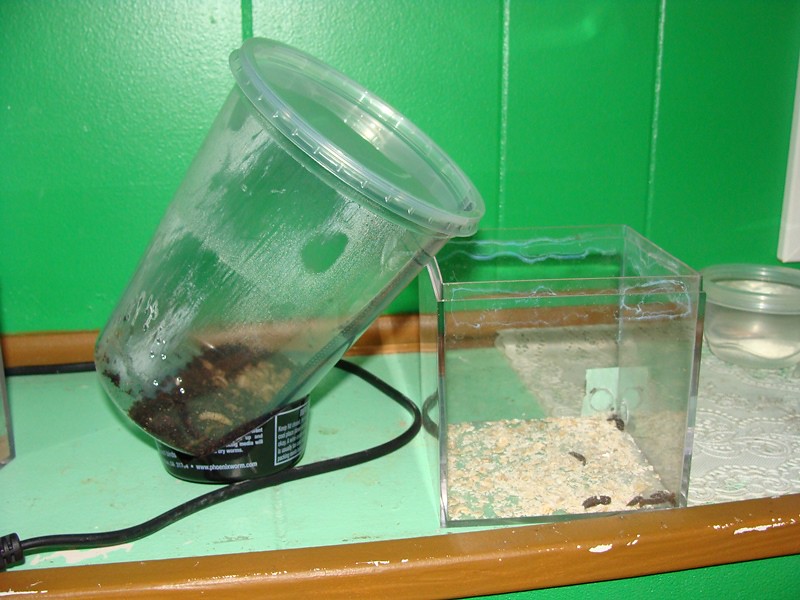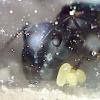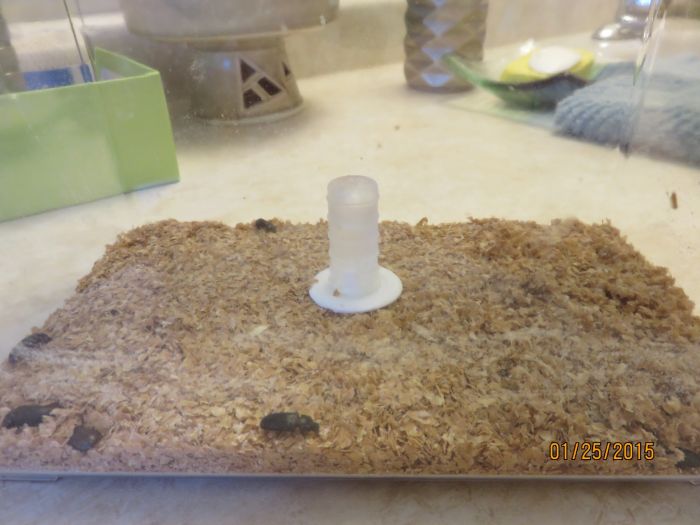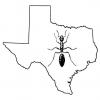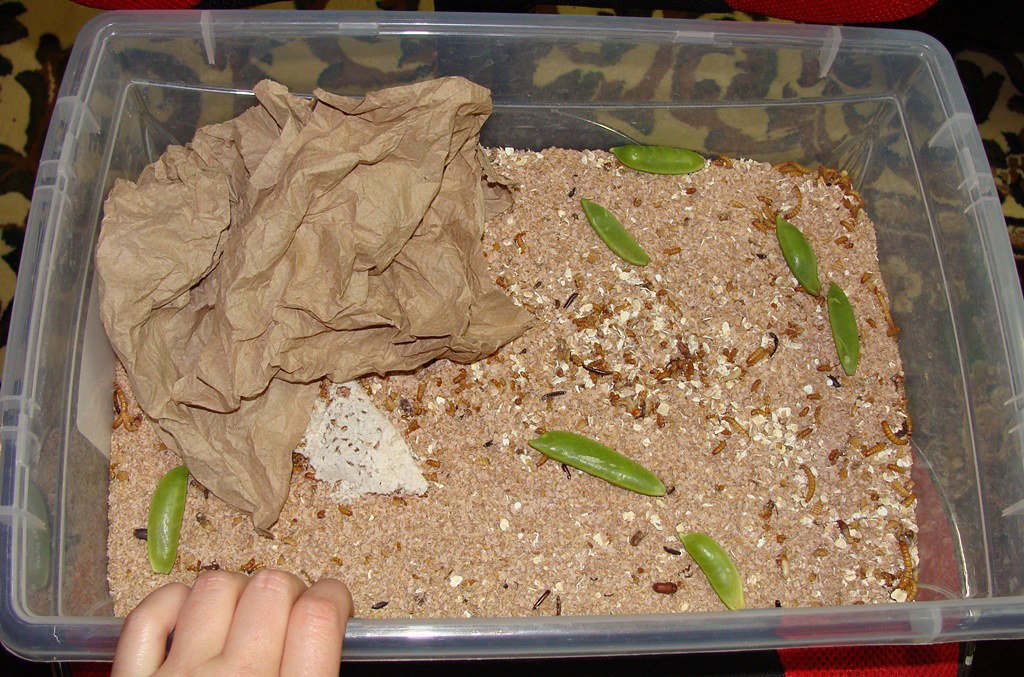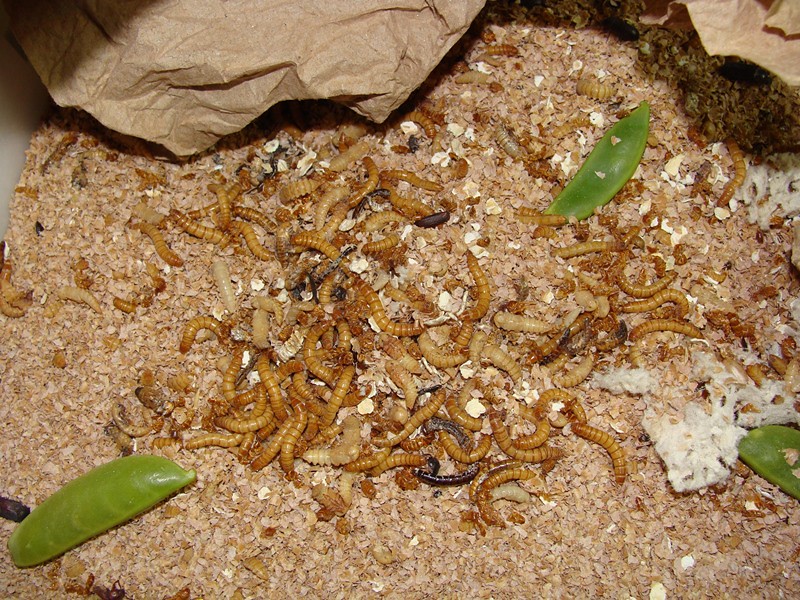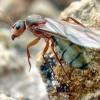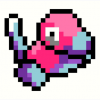How to culture Black Soldier Flies (Phoenix worms) in an indoor setup.
This will be a 2 stage setup, with two different containers. One is the adult/egg container and the other is the rearing bin. (see pictures of my setup below)
Adult setup:
The adult Black Soldier Flies mate in flight and require a container at least 24"H x 18"W x 16"L (Even a large clear rubbermaid container will work, some people use old aquariums put on their side, some use a large encloseure made from door screen or a small greenhouse).
In this container will be 2 smaller containers, a water dish on a wick/cotton ball system, and some "perches" on the side of the container. For the two smaller containers, one will hold pupae waiting to eclose, and the other is an egglaying dish. The pupae dish just needs a skiff of oats or bran for bedding. The egg dish will have a 1cm layer of instant mashed potatoes, moist oats, or some pieces of moist brown bread. Adult flies often lay eggs just above the food source, so find some corrugated cardboard and put small strips vertically in the egg dish. The adults flies will often lay their eggs in the small gaps in the sides of the corrugated cardboard.
Every week or so, move the small larvae/eggs to the rearing bin. Just dump all of food source in the rearing bin, it is the easiest way to move them. Wash the dish and refill with food and put it back in the adults setup.
Rearing Bin:
The rearing bin holds the larvae until they are ready to pupate. In the mature stage the larvae have only one purpose; trying to migrate away from the food source in search of a pupation site which makes collecting them easy.
The rearing bin has 2-4" of peat or very poor black soil. This bin will also have a small drain on the bottom and a "ramp" for the larvae to leave the bin to pupate. There are many ideas out there on how to build or add a ramp. Some people cut a pvc pipe lengthwise and put it on the sides, others just use a 5 galon pail and tilt it to a 40 degree angle and let the larvae crawl out the opening. They can climb a 40 degree angle with no problems, and steeper angles if they have lots of traction (ex. a smear of silcione covered with sand or door screen mesh).
Have another container under the opening to catch the larvae. Have a skif of oatmeal or bran for them to dry off and hide in. Once they pupate, move them to the adult enclose to the pupae tray.
Every couple generations, add new larvae eggs to another bin and let all larvae in the original bin grow out. This makes it easier to remove the old bedding and put fresh bedding in.
Larvae do very well on grain, fruit, and veggie diets, they can eat meat, but they do better if it makes a maximum of 10% of their diet. Larvae can operate up to 6-8" deep. They rarely consumed food deeper than this in the Biosystems Design Study.
Larvae, pupae and adults do best at 27-30C (80.6-86F) and 70% humidity.
To drain excess "tea" - have a drain and silicone/epoxy a couple layers of door screen, have something to catch it, or feed drier foods to absorb it. A drier food source also reduces any odours.
Notes from research papers and other sources:
Life cycle-
eggs- 4-6 days to hatch
larvae- 14-20 days (depending on temp)
pupae- 14-20 days (depending on temp - prefer temps over 25C to pupate)
Adults- 5-8 days
~43 days from egg to adult at 27C.
Females lay one clutch and die shortly afterwards.
Temperatures-
Recommended temperature is 27-30C (Do not go above 35C).
At 27C - larvae 19-24 days; pupae 16-19 days; adults 12-14 days.
At 25C activity lowered considerably. At 15C activity more or less stopped.
Humidity-
65-90% humidity, maximum development rates were at 70.5% (Biosystems Design Study), for mating anything between 30-90% was sufficient.
Adults-
Adults require heat and light to trigger mating. Flourscents rated 6500-10,000K right above the setup have been shown to be sufficient. Adding UV light to the existing light setup has been shown to help stimulate the adults to fly and mate.
Adults mate in flight and need some room to fly. Minimum space was 24"H x 18"W x 20"L. Perches on the side of the tank provided males a better viewing spot and areas at different temperatures. Taping or glueing bits of cardboard or fake plants to the walls worked well.
To work inside of the adults setup, simply turn off the lights. They are very lazy fliers.
Adults do need to drink water, but they drown very easy. Use a container and pack it with cotton balls, or use a piece of cloth as a wick.
Optimal egg laying environment-
Eggs were often laid 1-4" above the food source, or within the food source if it was drier. The wetter the substrate, the less attractive it was to adult flies. Moist food sources had the best egg laying rates.
If there is condensation on the side of a plastic container, the larvae can climb vertically.
There are pictures of people using a margarine container inside of an ice cream pail for the rearing bin.
Rearing bins should have little odour, and it is an earthy smell, a bit like wet straw.
To force move all larvae, slowly flood the nest. They will try to climb out.
How to build a Black Soldier Fly setup (LINK to thread I will make)
Also link in pvc frame with organza mesh.
Various rearing bins:
Pictures of how I built my Rearing Bin Setup:
1. Start off with 2 identical containers that stack
2. Draw a Ramp-like line on one container and cut it out. In the other container, cut out a small drainage hole and cover it with mesh (even several layers of door screen mesh work).
3. Use spacers to keep it the inner cutout from touching the walls, then silicone the base down. Let it dry.







